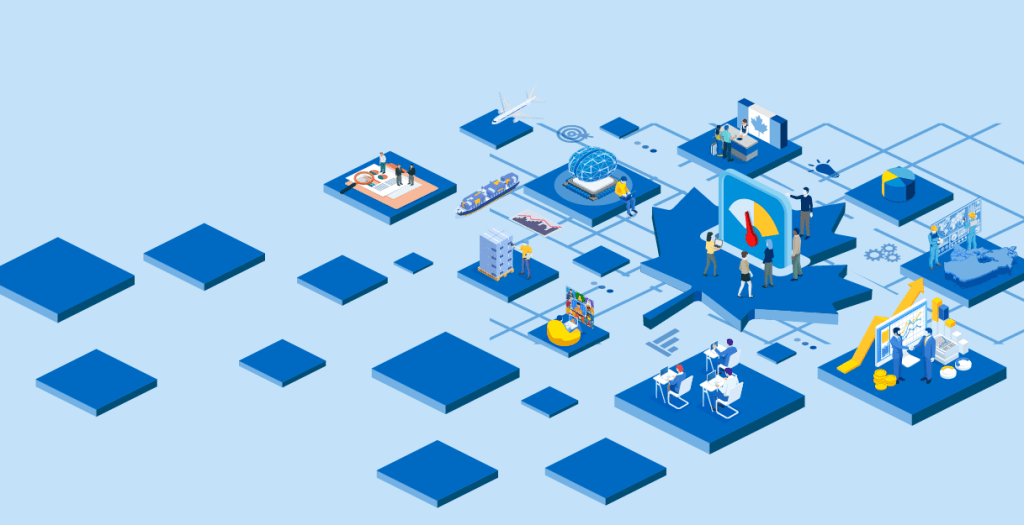Generative AI, suddenly, is everything, everywhere, all at once.
In the Okanagan Valley, the city of Kelowna is using AI to automate permit applications and answer questions about municipal bylaws, hoping to speed up building processes in the face of a housing crunch1. In Edmonton, global engineering giant Stantec has developed an AI-powered tool to analyze massive data sets on river flow, land use and water runoff patterns to help mitigate flood risk for infrastructure projects2. In Halifax, Dalhousie University researchers are training computers with thousands of photos and audio recordings of dairy cattle to see if their facial expressions, or something in the way they moo, offers a clue to how they are feeling—contented cows are known to produce more milk.
Artificial intelligence is the transformational technology of our time, with seemingly no end of applications as it accelerates a fourth industrial revolution fueled by data and electrons. Massively powerful, amazingly versatile, and only partly understood, AI uses technology to do things that usually require human intelligence. It scours massive datasets to look for patterns, solve problems and perform tasks.
Investing in Gen AI, along with other technologies, would not only help close the productivity gap; it could add to higher wages and help Canada compete in an increasingly digital and data-driven world.
Its latest iteration, Generative AI or Gen AI, uses machine learning to train computers to create things— write reports, code software, design molecules and produce art3. Gen AI has raised concerns about privacy, misinformation and ethical implications. It’s also posing a challenge to electricity supplies as each ChatGPT request to use one example consumes 10 times the amount of energy as a Google search.
By the same token, Gen AI holds the potential to get Canada’s economy growing again through accelerated innovation and productivity. The big question is whether Canadian businesses and public sector organizations will seize the moment.

Why we wrote this report:
To help explore Canada’s productivity challenge, RBC recently launched The Growth Project, exploring key economic drivers including productivity, trade, and investment; skills and immigration; and disruptive technologies like AI. For this report, we set out to explore the adoption of AI, and its impact on key economic sectors.
We surveyed innovators and AI specialists, convened roundtables of business leaders across key sectors, and developed an analytical framework to assess vulnerabilities across the Canadian economy. Finally, we offer recommendations to help with the adoption of Gen AI to ensure its impact is positive and productive for all Canadians.
Canada’s productivity rate—the amount we produce for each hour worked—has been declining in recent years, and is now 30% below U.S. levels. A key reason is a decline in capital spending and investments in intellectual property (which is now about 40% less than the U.S.). Our manufacturing sector invests just a quarter of what the U.S. does by the same measure4. Investing in Gen AI, along with other technologies, would not only help close the productivity gap; it could add to higher wages and help Canada compete in an increasingly digital and data-driven world.
Canadian businesses need to move now or risk getting left behind. What’s needed most of all is a change in mindset.
In business, such investments can make workers—be they white collar, green or blue—more productive by saving time and streamlining routine tasks. A study by Microsoft found coders who used Gen AI tools could complete tasks in 56% less time than non-users, and the time taken for writing tasks was reduced by more than a third (37%)5. Estimates for how much time it could save range from 1006 to 125 hours per worker per year7, boosting labour productivity by 8% by 2030.
What business wants from Gen AI is to help save employees time to work on more important tasks and create more value. A survey of Canadian start-ups by the Conference Board of Canada found 63% said implementing AI would not reduce headcount and 30% said they weren’t sure8. (Two-thirds said it has already made them more competitive).
The productivity boost from Gen AI could add $180 billion per year to the Canadian economy by 20309, with another $ 5 billion coming from the creation of new Gen AI products and services10. The Conference Board sees it adding almost 2% to Canada’s gross domestic product with tech centres like Toronto, Waterloo and Vancouver gaining the most11.
To be part of the Gen AI generation, Canadian organizations will need to close the “readiness gap.” Because ready or not, the next technological transformation is coming. It may already be here.
Why then are Canadian businesses so far behind in adopting Gen AI? A recent report from the Canadian Chamber of Commerce revealed that one in seven Canadian businesses, or 14%, are using Gen AI or have plans to use it soon. Almost three out of four, or 73%, are not even considering it yet. The reasons are what one might expect for any revolutionary new technology—cost, concerns over data safety, doubts that workers have the skills to use it, and fear of making a mistake. Fear of AI is not limited to those who run businesses or public sector companies. Polling shows less than a third of Canadians (32%) trust AI systems, compared to 39% globally and 40% in the U.S. Only 28% of Canadians believe current regulations are sufficient to make AI use safe12.
The risks may be too big to ignore, but so too, are the benefits. To be part of the Gen AI generation, Canadian organizations will need to close the “readiness gap.” Because ready or not, the next technological transformation is coming. It may already be here.
Where’s Canada on adoption?
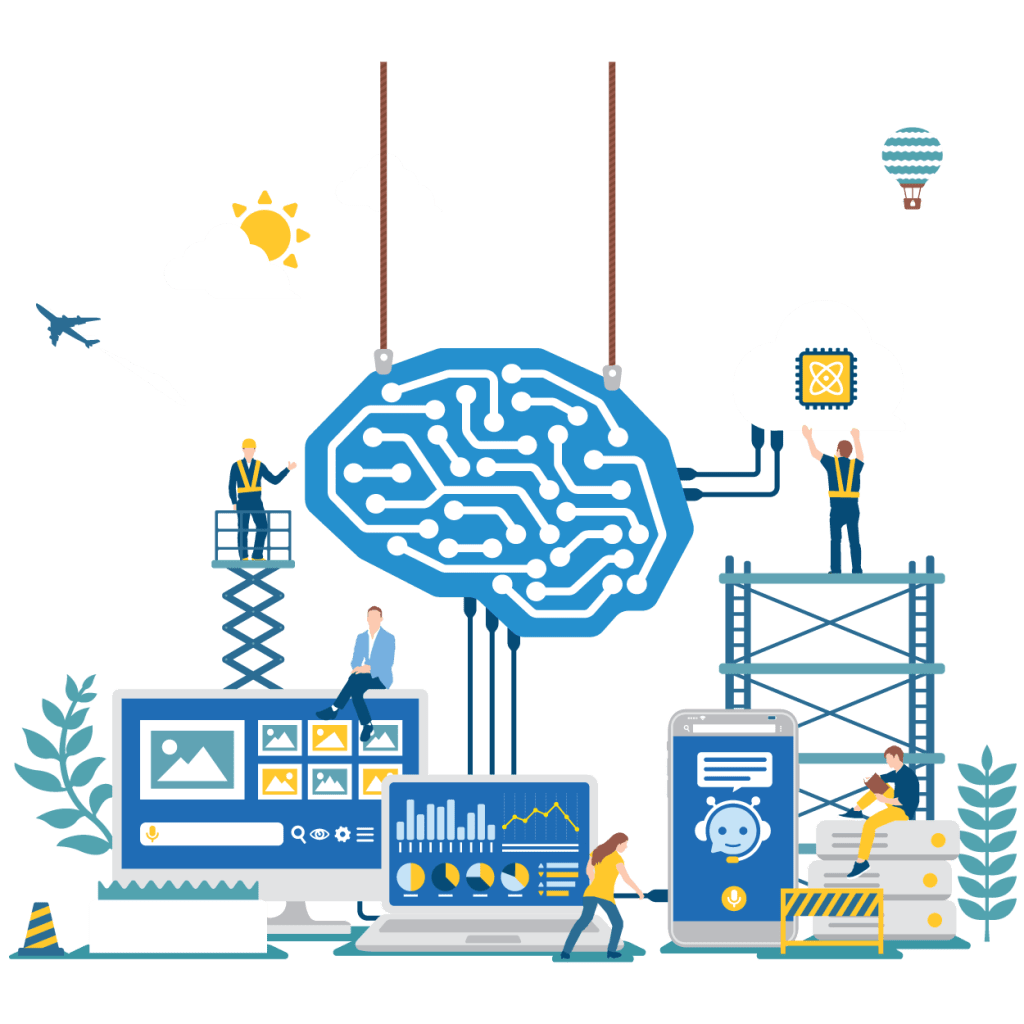
How far behind is Canada when it comes to Gen AI? The latest and most comprehensive look came in Statistics Canada’s quarterly survey of business conditions, a survey of 13,327 companies in early 2024. It showed 73% of Canadian firms were not even considering using Gen AI. It put the percentage of companies using it at 9.3%, and those with plans to use it soon at 4.6%.
Internationally, we rank 20th out of 35 Organisation for Economic Co-operation Development countries in AI adoption, though that data is a few years old13. IBM’s Global AI Adoption Index from 2022 put Canada 10th out of 15 countries surveyed, 6 percentage points behind the average. We are not only trailing the U.S., we’re also not chasing Gen AI as hard.
To be trailing so many competitors is at odds with our leadership in research. We were the first country to create a national strategy for AI in 2017—a $125 million effort led by the Canadian Institute for Advanced Research intended to attract and retain talent and support research and innovation14. Canada’s three National AI Institutes are recognized as world-leading, and some of the great minds in machine learning call Canada home. We also have a dynamic AI ecosystem of research labs, business incubators, accelerators, Gen AI vendors and venture capital firms15.
Unfortunately, Canada has simply been better at generating ideas and developing models than putting them to work.
Economic
overview

The basic structure of Canada’s economy presents some challenges when it comes to seizing the Gen AI moment. We have a small population and a large, diverse land mass making it a challenge to create the kind of large data sets that AI tends to require. Much of our economy is regulated as well, which can constrain innovation with technologies and business models. And then, there’s the large share of our economy connected to natural resources—forestry, mining, fishing, oil and gas—which have not been at the forefront of Gen AI anywhere.
A further impediment to the adoption of Gen AI is cost, be it through large computers and their electricity demand, or the increasing competition for tech talent. Those cost barriers are even greater for small businesses, which dominate our economy. About 98% of businesses in Canada have fewer than 100 employees, and small businesses are typically less eager to invest in new technology. They may believe they don’t have the money or the expertise needed, or it may be that the competitive pressures simply aren’t as great.
Analysis by the Business Data Lab (BDL) at the Canadian Chamber of Commerce puts the proportion of small businesses using or planning to use Gen AI at 15%, with roughly half being businesses with 100 employees or more16. Small companies ought to have an easier time retraining employees and re-orienting business strategy and technology use, the BDL argued. However, it conceded financing can be a bigger challenge for small businesses. Still, the benefits could be substantial. By one estimate, small and medium enterprises (SMEs) could add $100 billion a year to the Canadian economy by 2030 by using Gen AI with 70% of that coming from small businesses17.
Governments and the public sector should be moving faster as well. Innovation is not just a private sector concern, especially in Canada where the public sector accounts for roughly 40% of the economy and a fifth (21%) of all employment18. Canada’s large public sector education and healthcare industries are 70% and 50% less productive than in the U.S., respectively19.
StatCan puts Gen AI adoption by government agencies at a dismal 0.3%. It’s a good deal better in the healthcare and social assistance industry, which is mostly public sector, at 9%, but that’s still no better than the nation as a whole. The federal government said this spring it wants to have a plan in place by next spring for using AI in its operations, which may indicate it’s off to a late start. Among its problems is a massive technical debt, meaning systems are so old that introducing AI may not be possible or worth it. Microsoft’s study on AI opportunities in Canada broke out several sectors and estimated that AI could add $13 billion in value for healthcare by 2030, and $14 billion for government20.
Even old economy stalwarts like natural resources could see a $9 billion increase in GDP by adopting AI21. But each sector may require a different approach, as will competitors within those sectors. Many face different regulatory challenges in applying AI to customer data. Others continue to struggle to attract or retain talent for any kind of advanced technology. Still, some sectors have deep relationships with universities, where much of Canada’s AI research is housed.
The diversity of Canada’s economy suggests a diversity of approaches will be needed for the Gen AI landscape, which we lay out in the next section.
Sectoral analysis–Readiness gap
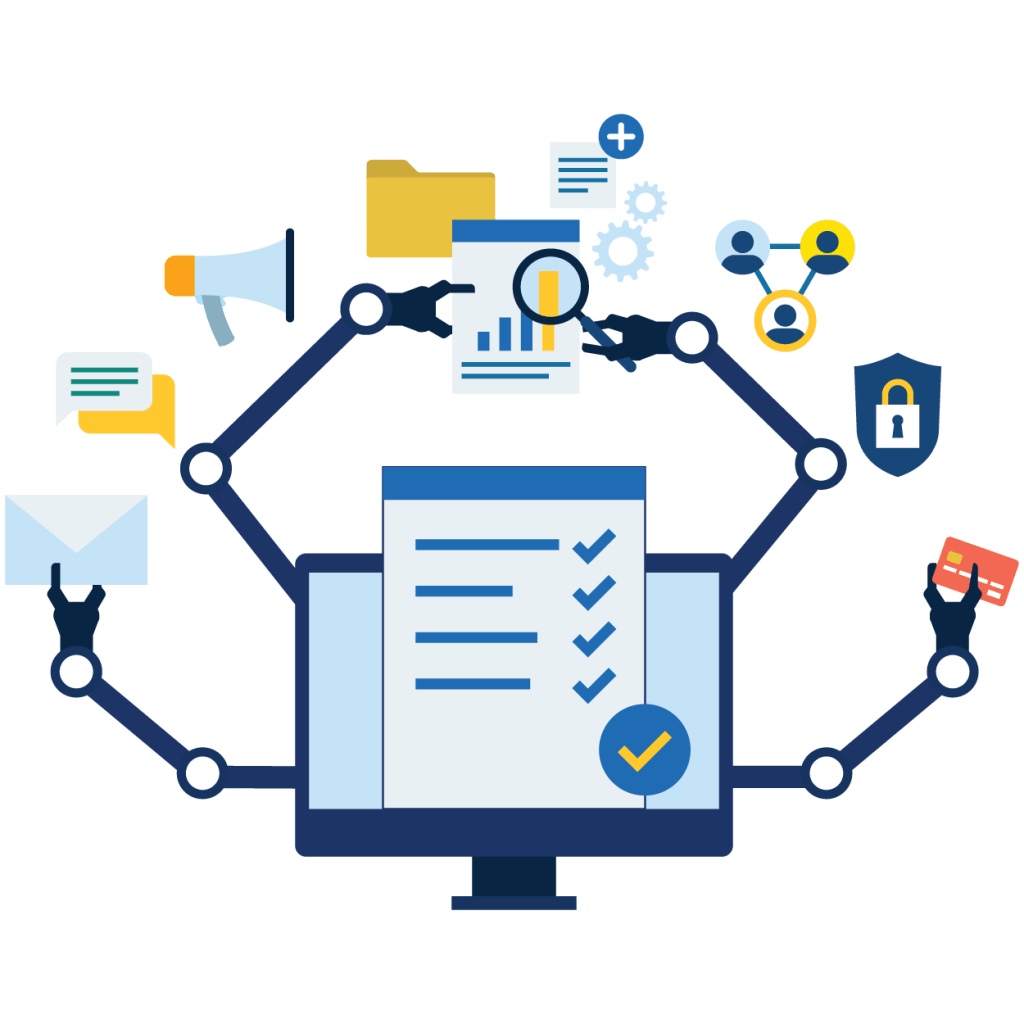
To better understand Canada’s readiness gap, we developed an analytical model that assesses major sectors of the economy, using key components that can drive Gen AI adoption:
-
Technology adoption rates. Based on the speed at which Canadian firms invest in intellectual property products (IPP) as a share of that sector’s GDP compared to the U.S. over the last 10 years.
-
Risks due to competitive pressure. Based on the risks of disruption or heightened global competition in major sectors, reflecting competitive forces that could influence the readiness gap.
-
Productivity potential. The promise of Gen AI for key economic sectors based on comparative studies, industry data and sector roundtables.
-
Skills readiness. Current and transferrable skills in major sectors based on labour market data and sector interviews.
-
Corporate willingness, based on StatCan‘s 2024 “Business Use of Generative AI” survey.
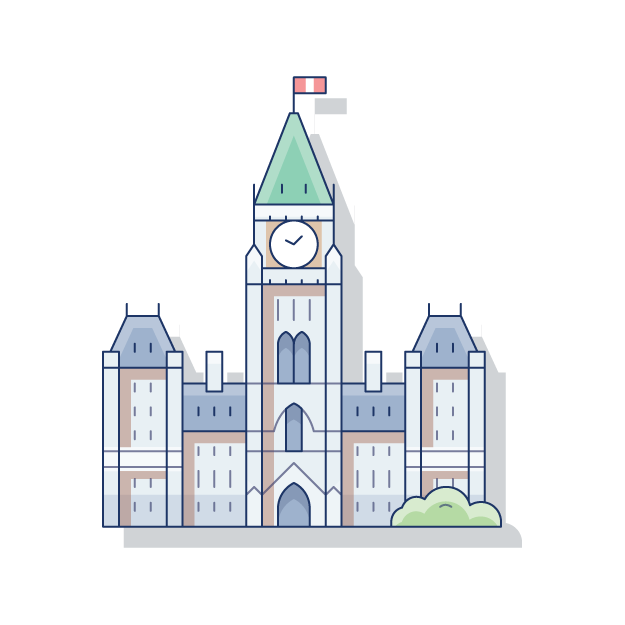
Government and public services
22%
of GDP
4.2
million jobs
Low risk
High reward
Strength: Large, centralized data sets including health, tax and school records
Priority: Data governance
-
Slow record of tech adoption
-
Higher than average skills readiness
-
Use cases: Enrolment processing, scheduling and record keeping, predicting curriculum demand
-
Key need: Data cooperatives
-
Payoff: Customized learning, more efficient research
-
Slow record of tech adoption
-
Average skills readiness
-
Use cases: Permit applications, crime patterns, public policy effectiveness
-
Key need: Stronger data infrastructure
-
Payoff: Leaner, more effective government
-
Slow record of tech adoption
-
11% already use or plan to use Gen AI
-
High level of skills readiness
-
Use cases: Drug discovery, disease detection
-
Key need: Enhanced data governance
-
Payoff: Better health outcomes at lower costs

Case studies: AI Across The Board
Health
Mutuo Health wants to put an end to manual note scribbling by physicians.
The Toronto-based startup aims to leverage Gen AI technology with AutoScribe, a virtual medical scribe that transcribes doctor-patient dialogues and takes accurate notes in real time.
“This significantly reduces the after-visit notetaking time, which liberates the clinician to see more patients,” said Noah Crampton, CEO of Mutuo Health. “As a clinician myself, I also see my fair share of colleagues dissatisfied with their roles.” The tool has improved job satisfaction among doctors by 72%, boosting their productivity and well-being, Crampton said.
The tool is being used by more than 1,000 clinicians since it was launched in 2023, and is a tangible example of productivity improvements in Gen AI. The company says the tool shaves off an average of 80% of note-taking time for doctors. Considering that manually writing notes on average takes about five hours per week, a doctor can get back on average 16 to 20 hours per month – freeing them up for more patient care.
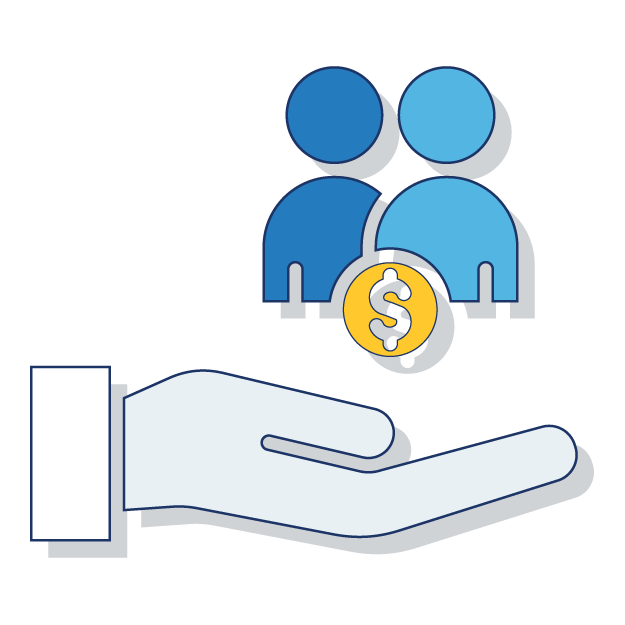
Professional and financial services
14%
of GDP
2.1
million jobs
High risk
High reward
Strength: Integrated with U.S. supply chains and markets
Priority: Supply chain management
-
Canadian firms invested 8% more in new technology than U.S. counterparts over the past decade
-
Nearly 20% of firms already use Gen AI
-
High skills readiness
-
Use cases: Contract generation, legal research, due diligence
-
Key need: Regulatory alignment
-
Payoff: More access to legal, tax and consulting services
-
Lower investments in intellectal property than U.S. counterparts
-
Three Canadian banks ranked among top 10 in the world on AI
-
22% already use or plan to use Gen AI
-
High skills readiness
-
Use cases: Enhanced compliance and fraud detection, personalized financial advice
-
Key need: Enablement of frontline staff
-
Payoff: More effective fraud prevention and cyber-defence

Case studies: AI Across The Board
Professional services
Eirene, engaged in death care, has integrated Gemini, Google’s generative AI, to automate and optimize various aspects of its FuneralOS platform, allowing their staff to focus on delicate services such as cremation arrangements and funeral services.
Eirene uses GenAI to transcribe, analyze, and extract relevant information from phone calls, emails, and chat messages. The application can fill out a dozen government forms efficiently, reducing manual data entry and minimizing the risk of errors.
“We leverage AI to drive operational efficiencies behind the scenes, allowing us to invest more resources into delivering exceptional human-centered experiences for our customers, said CEO Mallory Greene. “The key is using AI as an enabling tool, not a replacement for human ingenuity.”

Manufacturing
10%
of GDP
1.6
million jobs
High risk
High reward
Strength: Integrated with U.S. supply chains and markets
Priority: Supply chain management
-
Heavily underinvested in new technology, 72% less than U.S. over the past decade
-
15% already use or plan to use Gen AI
-
Medium skills readiness
-
Use cases: Product development, production optimization, supply chain management
-
Key need: More re-training of existing technical staff
-
Payoff: Higher productivity
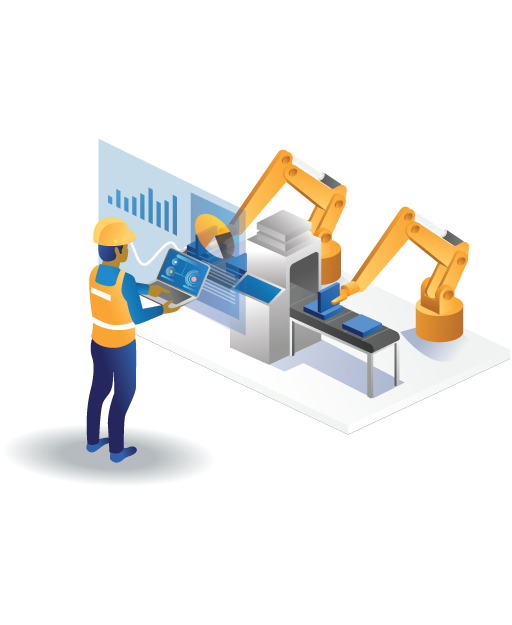
Case studies: AI Across The Board
Manufacturing
Gen AI could soon make its mark in the physical world. That’s the goal of Sanctuary AI, a Vancouver-based company, which aims to develop an AI system that mimics the human brain and body through a human-like robot.
Integrated large language models, such as ChatGPT, help robots ‘think’ and act like humans and translate language into actions and concepts. But while ChatGPT stops at “thinking,” Sanctuary AI robots go a step further with a range of human-like motions that can be used for manual or repetitive tasks. Sanctuary AI has attracted the attention of leading companies around the world. In April 2024, the company signed a strategic partnership with Magna International to deploy Gen AI applications across the auto parts giant’s automotive manufacturing processes.
Listen to our full interview on Disruptors:
Mechanical Minds: Exploring the World of AI Robots – RBC Thought Leadership

Real estate and construction
20%
of GDP
1.4
million jobs
Low risk
Low reward
Strength: Highly skilled trades
Priority: Virtual planning to reduce permit approval time
-
Underinvested in new technology, 50% less than U.S. over the past decade
-
17% already use or plan to use Gen AI
-
Low skills readiness
-
Use cases: Market analysis, virtual staging, contract generation
-
Key need: Tech talent
-
Payoff: More affordable housing
-
Underinvested in new technology, 40% less than U.S. over the past decade
-
6.5% already use or plan to use Gen AI
-
Low skills readiness
-
Use cases: Virtual modeling, resource optimization
-
Key need: Tech talent
-
Payoff: Fewer construction delays
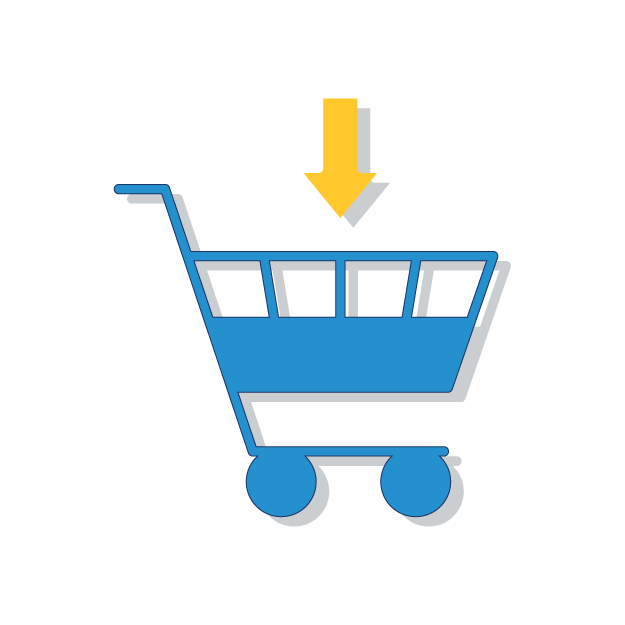
Retail
5%
of GDP
2
million jobs
High risk
Medium reward
Strength: Strong brand loyalty and trust
Priority: Better understanding customer preferences
-
Technology laggard, investing 40% less than U.S. peers
-
11% already use or plan to use Gen AI
-
Low skills readiness
-
Use cases: Inventory management, product development
-
Key need: High-quality data management
-
Payoff: Global competitiveness

Case studies: AI Across The Board
Retail
Retailers are often at the forefront of disruptive technology as they balance consumer expectations and shifting preferences with just-in-time inventory. To that end, Canadian Tire recently introduced CeeTee, a virtual shopping assistant powered by Gen AI, into its mobile app.
CeeTee streamlines the shopping journey by helping customers easily select the right tires for their vehicles.
“With CeeTee, we’re meeting our customers where they’re at on their shopping journey. Purchasing tires is not always an easy decision; it’s a technical decision and an expensive purchase. We started with tires and are using this as an opportunity to experiment with Gen AI and really understand how our customers might use this type of application,” said Cari Covent, Head of Artificial Intelligence and Emerging Technology at Canadian Tire Corporation.
The results are promising: the tool is guiding customers through their shopping journey, from browsing to asking questions, receiving recommendations, and ultimately selecting and purchasing the right tires for their vehicle. Furthermore, the customer interactions feed into a rich database enabling retailers to better tailor their products, and inform merchandising and inventory decisions, and Canadian Tire also has the opportunity to use these interactions to improve personalized offerings for its customers.

Information and cultural industries
3.3%
of GDP
360K
jobs
High risk
High reward
Strength: Skills
Priority: Quality and accuracy
-
Investing 66% less than U.S. counterparts in new technology
-
31% already use or plan to use Gen AI
-
High skills readiness
-
Use cases: Content creation, personalized recommendations, fact-checking
-
Key need: Combat misinformation
-
Payoff: A more informed society

Mining and oil and gas
5%
of GDP
200K
jobs
Low risk
Medium reward
Strength: Global expertise
Priority: Technology investment
-
Investing 63% more than U.S. counterparts in new technology
-
8% already use or plan to use Gen AI
-
Low skills readiness
-
Use cases: Exploration and development, analyzing geological data
-
Key need: More tech talent
-
Payoff: More sustainable resource extraction

Agriculture, forestry and fishing
2%
of GDP
575K
jobs
Medium risk
Medium reward
Strength: Global expertise
Priority: Production optimization
-
Investing 80% more than US counterparts in new technology
-
8.3% already use or plan to use Gen AI
-
Low skills readiness
-
Use cases: Carbon sequestration modelling, fertilizer and seed optimization
-
Key need: More on-farm tech talent
-
Payoff: More food production with fewer emissions
Recommendations
The Gen AI revolution will have an impact both broad and deep—across all sectors, affecting virtually everything businesses do. It will help companies make systems and processes more efficient, provide better customer service, and create new and better products—all at greater speed and lower cost. It will free employees from drudgery and let them create more value. It will make the Canadian economy more productive and innovative, better able to compete against the world and deliver prosperity for citizens.
Canadian businesses need to move now or risk getting left behind. What’s needed most of all is a change in mindset. Business needs to shed the reluctance to invest in new technologies and the belief that decisions can be delayed until there is less chance of making a mistake.
Barriers preventing AI adoption, or the rationalizations for waiting, need to be overcome. Here is what businesses can do:

1. Build public trust in AI.
It’s true Canadians don’t yet trust AI. The annual Edelman Trust Barometer showed just 31% of Canadians surveyed said they trust the technology, 19 points lower than the global average. Nearly half of Canadian respondents told an Ipsos study that products or services using AI make them nervous. Constant public discourse on the need for “guardrails” around the technology has only added to the suspicion.
Canadian companies have a role to play in changing this. They need to assure employees, customers, and the broader public that AI can be adopted responsibly. That will help earn the social license to adopt the technology in return. Companies should be transparent when using Gen AI, train their employees when relevant so that they in in turn can explain its use cases to clients and stakeholders.
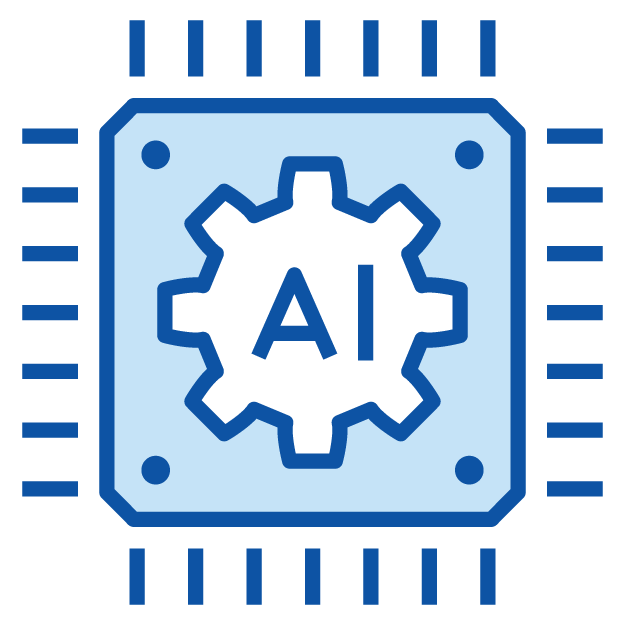
2. Build an AI-capable labour force.
Workers need to overcome the fear that AI will take their jobs, and companies need to demonstrate that they intend to make them better and faster at their jobs and give them the tools that will allow them to innovate. (The Chamber of Commerce report showed the second biggest benefit seen by early Gen AI adopters was an increase in automation of tasks without reducing employment. Accelerating the development of creative content was at the top.) Gen AI is effectively a way to upskill the workforce.
That means investing in education and training, and working with post-secondary institutions to make sure the programs needed are available or being developed. Organizations that serve small businesses should help by setting up networks and how-to guides to get them started.
Employees can help themselves by taking advantage of online tools to experiment with Gen AI. Many are free of charge or almost free. “Prompt engineering” will be an increasingly important skillset for workers in the future, and for companies as well.

3. Invest now, pilot early and start small if necessary.
The cost of AI and Gen AI models is coming down, and small pilot projects to get started are affordable. It can be worth the investment. One study puts the average return on investment for AI at $3.50 for every $1 invested22.
Creating an environment safe for exploration and experimentation by employees is critical. By definition, Gen AI—and the business data it’s trained on—will improve over time. A business that starts too late might miss exponential improvements that competitors are taking advantage of, particularly, if they started using the technology months or years before.
Companies don’t need to begin with organization-wide transformational Gen AI projects. They can start by using it to tackle smaller practical challenges and then leverage the success to other projects.

4. Fix healthcare.
A sector so large and critical needs particular attention. It’s one that still uses fax machines to communicate and needs urgent modernization. Basic data infrastructure needs to be built. Digitized health records would be a start, but we should consider dynamic, digital networks of information that enable our healthcare system to spring from the middle to the front of the pack and leverage data for AI applications.
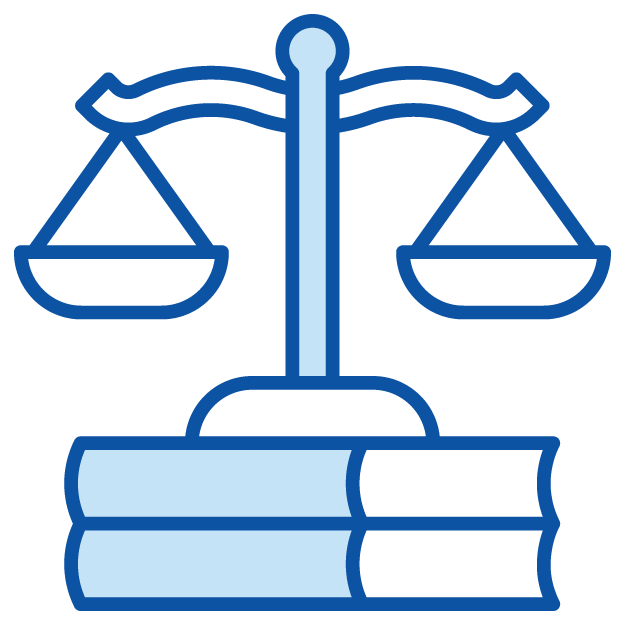
5. Build the right policy environment.
When attempting to regulate AI, governments should take technologically neutral and risk and principles-based approaches to legislation. This will help create sustainable regulations amid very rapid technology changes. They should also align as much as possible with international AI governance standards and promote interoperability (when a product/system can work with, exchange, or make use of information from another product/system) for Canadian companies abroad.
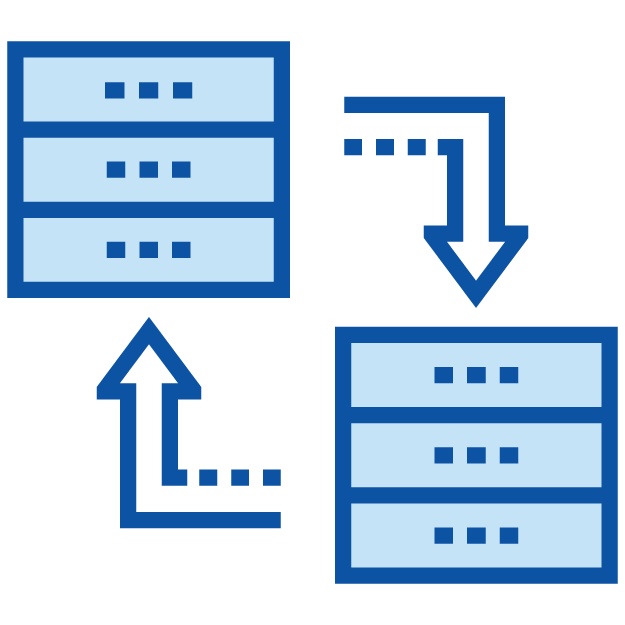
6. Review the appropriateness of data residency requirements.
Data residency requirements have slowed the adoption of modern cloud services in governments and some key industries. We should re-evaluate their pertinence in 2024. In place of the professional-grade software used by other governments and companies, Canadian government teams end up depending on legacy IT systems. Canada is too small a market for any but the largest cloud service providers to launch dedicated infrastructure. Currently, data residency requirements limit software options from major providers and give access to less-than-optimal AI models for companies to train on.
All of this is only possible with the right infrastructure in place. The electricity requirements of AI computing have surged dramatically—data centers running complex AI models need the power equivalent to the City of Vancouver or Calgary. As AI continues to evolve and expand, its electricity demands are expected to grow, highlighting the need for efficient and sustainable energy solutions to support this technological advancement without overwhelming existing power infrastructures. Recent announcements from the federal government in computing power further underscore the need for Canadian governments to keep an open dialogue with the industry on finding ways to let them seize the opportunity.
Related Reading
For more, go to rbc.com/en/thought-leadership/the-growth-project.
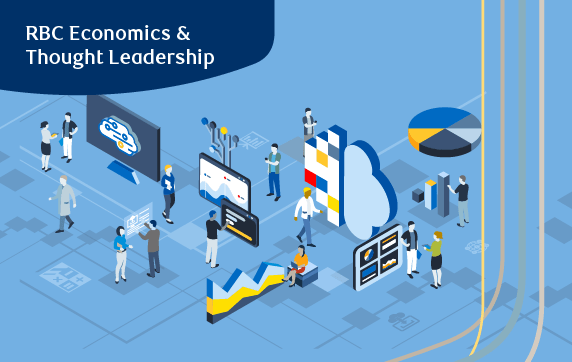
Download the Report
Contributors:
Pascal Dessureault, Director, Strategic Initiatives
Rajeshni Naidu-Ghelani, Managing Editor, Economics & Thought Leadership
Mark Stevenson, Contributing editor
Benjamin Richardson, Research Associate
Darren Chow, Content Strategy and Production
We recognize the support of Business + Higher Education Roundtable who helped us gather business and institutional leaders as part of this research initiative.
- Microsoft – AI in Canada: Meeting the opportunity and governing AI in Canada, 2023.
- Microsoft – AI in Canada: Meeting the opportunity and governing AI in Canada, 2023.
- Microsoft – Canada’s Generative AI opportunity, 2024.
- RBC – Canada’s Growth Challenge: Why the economy is stuck in neutral
- Microsoft – Canada’s Generative AI opportunity, 2024.
- Microsoft – Canada’s Generative AI opportunity, 2024.
- Conference Board of Canada – Real Talk: How Generative AI Could Close Canada’s Productivity Gap and Reshape the Workplace—Lessons From the Innovation Economy, 2024.
- Conference Board of Canada – Real Talk: How Generative AI Could Close Canada’s Productivity Gap and Reshape the Workplace—Lessons From the Innovation Economy, 2024.
- Microsoft – Canada’s Generative AI opportunity, 2024.
- Microsoft – Canada’s Generative AI opportunity, 2024.
- Conference Board of Canada – Real Talk: How Generative AI Could Close Canada’s Productivity Gap and Reshape the Workplace—Lessons From the Innovation Economy, 2024.
- Microsoft – Canada’s Generative AI opportunity, 2024.
- Automation Nation? AI Adoption in Canadian Businesses (dais.ca)
- Microsoft – AI in Canada: Meeting the opportunity and governing AI in Canada, 2023.
- Microsoft – AI in Canada: Meeting the opportunity and governing AI in Canada, 2023.
- Canadian Chamber of Commerce – Prompting Productivity: Generative AI Adoption by Canadian Businesses. 2024.
- Microsoft – Canada’s Generative AI opportunity, 2024.
- https://www.fraserinstitute.org/studies/size-of-government-in-canada-in-2022
- RBC – Canada’s Growth Challenge: Why the economy is stuck in neutral
- Microsoft – Canada’s Generative AI opportunity, 2024.
- Microsoft – Canada’s Generative AI opportunity, 2024.
- Canadian Chamber of Commerce = Canadian Chamber of Commerce – Prompting Productivity: Generative AI Adoption by Canadian Businesses. 2024.
This article is intended as general information only and is not to be relied upon as constituting legal, financial or other professional advice. The reader is solely liable for any use of the information contained in this document and Royal Bank of Canada (“RBC”) nor any of its affiliates nor any of their respective directors, officers, employees or agents shall be held responsible for any direct or indirect damages arising from the use of this document by the reader. A professional advisor should be consulted regarding your specific situation. Information presented is believed to be factual and up-to-date but we do not guarantee its accuracy and it should not be regarded as a complete analysis of the subjects discussed. All expressions of opinion reflect the judgment of the authors as of the date of publication and are subject to change. No endorsement of any third parties or their advice, opinions, information, products or services is expressly given or implied by Royal Bank of Canada or any of its affiliates.
This document may contain forward-looking statements within the meaning of certain securities laws, which are subject to RBC’s caution regarding forward-looking statements. ESG (including climate) metrics, data and other information contained on this website are or may be based on assumptions, estimates and judgements. For cautionary statements relating to the information on this website, refer to the “Caution regarding forward-looking statements” and the “Important notice regarding this document” sections in our latest climate report or sustainability report, available at: https://www.rbc.com/community-social-impact/reporting-performance/index.html. Except as required by law, none of RBC nor any of its affiliates undertake to update any information in this document.




